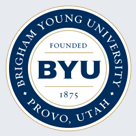BYU Education & Law Journal
Keywords
failures of the public school system, learning envirnments and outcomes in public schools, remedies for failures and inequities in public schooling, legal challenges in the education system
Abstract
Critiques of the United States public education system abound. Many of these critiques expose the reality that the public school system regularly fails to do what it purports to do. Others discuss how the public school system in fact achieves some of its more insidious purposes. When the reality of the public schooling experience – especially for students from marginalized communities – is juxtaposed with the lofty rhetoric surrounding public education, a substantial disjuncture is evident: there is a gap between the idealized notions of public education and the actual learning environments and outcomes for many public school students. For these students, schools are all too often experienced as little more than impoverished holding facilities that perpetuate inequality. To address this disjuncture and the failures and inequities in public schooling, scholars, advocates, families, and students have often sought remedies through the legal system. Courts have regularly engaged with the process of determining what the right to education consists of, and scholars have exerted influence on this process.
Recommended Citation
Miller, Logan
(2022)
"Reimagining the Right to Public Education,"
BYU Education & Law Journal: Vol. 2022:
Iss.
1, Article 5.
Available at:
https://scholarsarchive.byu.edu/byu_elj/vol2022/iss1/5

